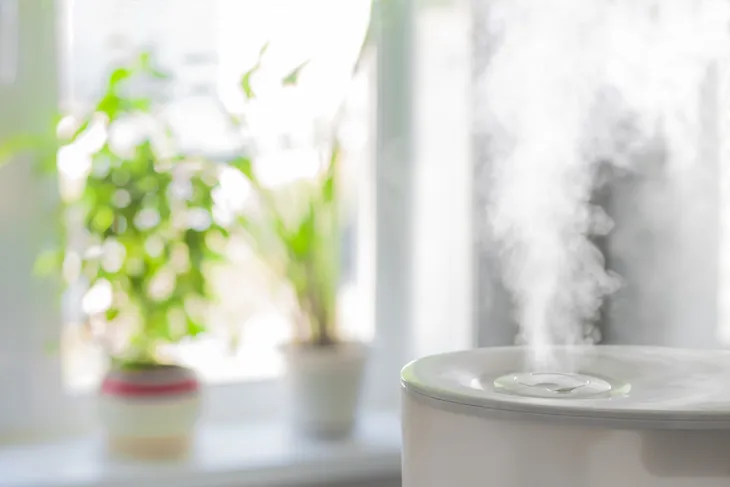Nosebleeds are incredibly common. Most people experience at least one nosebleed in their life thanks to the positioning of the nose and the high-density blood vessels in it.
While they can be scary, they are rarely a serious medical problem. Nonetheless, it’s still good to know what they are, what causes them, what you can do about them, and when you should see a doctor. Let’s take a look at 12 interesting facts about nosebleeds!
What Is a Nosebleed?
So, what is a nosebleed exactly? A nosebleed, medically known as epistaxis, is “the loss of blood from the tissue that lines the inside of your nose,” explains the Cleveland Clinic.
The nose’s location (in the middle of your face), as well as the vast number of blood vessels located close to the surfaces, makes the nose susceptible to nosebleeds. The Clinic states, they’re incredibly common too, with about 60-percent of individuals experiencing at least one in their lifetime.
Common Symptoms of a Nosebleed
The telltale sign of a nosebleed, is you guessed, blood coming from the nose. The blood can come out of either nostril and only one is typically affected. Everyone will experience a nosebleed differently with the blood flow ranging from light to heavy.
If you develop a nosebleed while lying down, you may “feel liquid in the back of the throat before the blood comes from the nose,” says Medical News Today. The source notes that you shouldn’t swallow the blood as it can make you feel nauseous and in some cases may cause vomiting.
What Are the Different Types of Nosebleeds?
There are two main types of nosebleeds. They are an anterior nosebleed or a posterior nosebleed and one is more serious than the other.
First, an anterior nosebleed is the most common, and they’re typically not serious. They develop in the front of the nose on the lower part of the septum. There are many small blood vessels in this area that make the nose fragile and an easy target for nosebleeds.
The other type, a posterior nosebleed is less common but is typically more serious than an anterior nosebleed. They usually cause heavy bleeding (sometimes in the back of the throat) because it originates toward the back of the nasal passage (near the throat) and because there are larger blood vessels located here.
Can They Be Serious?
While most nosebleeds aren’t a cause for concern, some are serious and may require immediate medical attention. If your nosebleed lasts longer than 20-minutes then you should seek medical help. If your nosebleed occurs after an injury this could also be serious and a sign of a posterior nosebleed.
Medical News Today notes you should also look out for other symptoms that indicate your nosebleed is serious. They include heavy bleeding, heart palpitations, and shortness of breath. If you start swallowing large amounts of blood or turn pale you should also seek immediate medical attention.
What Causes Anterior Nosebleeds?
There are many things that cause an anterior nosebleed. Something as simple as picking the inside of your nose can cause a nosebleed, especially if your nose is irritated or if you have long, sharp fingernails.
Upper respiratory infections such as sinusitis, a cold, or flu can also cause anterior nosebleeds. This can be due to irritation caused by the infection. Hot climates with low humidity, high altitudes, exercise, and the use of certain types of medications are also common causes of anterior nosebleeds.
What Causes Posterior Nosebleed
A posterior nosebleed can be caused by the same factors of an anterior nosebleed but there are a few other causes worth noting. High blood pressure, calcium deficiency, and some blood disease (such as hemophilia or leukemia) can cause a posterior nosebleed.
Medical News Today says nasal surgery and some tumors may also be the culprit. Finally, the source says exposure to certain chemicals (that irritate the mucous membrane) may also result in a posterior nosebleed.
Other Causes
There can also be other causes of nosebleeds such as an injury like a broken nose. If a foreign object gets stuck in the nose, a nosebleed can also occur. Although, this is more common in young children who are playing with small toys.
Medical News Today says rheumatic fever, liver cirrhosis, and celiac disease can also cause nosebleeds. Finally, individuals with a low platelet count may also be more susceptible to nosebleeds because they’re more prone to bleeding.
Who Gets Nosebleeds?
As we mentioned, nosebleeds are incredibly common and anyone can get them. That said, some people may be more prone to them. For example, the Cleveland Clinic says children 2 and 10-years old may be more prone to nosebleeds due to sticking fingers (or objects) in their noses.
Adults 45 to 65-years old may also be more likely to develop nosebleeds because it typically takes blood longer to clot in older adults. Some individuals may also be taking blood-thinning drugs which can make you more prone to nosebleeds. Having a blood clotting disorder (such as hemophilia) can also increase your risk of nosebleeds.
Finally, pregnant women are also more susceptible to nosebleeds. This is because “blood vessels in the nose expand while pregnant, which puts more pressure on the delicate blood vessels in the lining of the nose,” says the source.
How to Treat an Anterior Nosebleed
If you experience an anterior nosebleed, the good news is it can likely be treated at home. A common myth is you should tilt your head back to stop the nose bleed but this is not true! Tilting your head back or lying down can cause you to swallow blood which can cause nausea and vomiting.
To treat a nosebleed, you should sit up and squeeze the soft part of your nose. In fact, you should actually lean slightly forward. Healthline says to make sure your nostrils are fully closed and keep them closed for about 10-minutes while breathing through your mouth. The source also notes applying a cold compress to your nose or using a nasal spray decongestant may help stop the nosebleed.
How to Treat a Posterior Nosebleed
Since a posterior nosebleed is typically more severe than an anterior nosebleed you shouldn’t treat them at home. If you’re bleeding from the back of your nose, or if blood is flowing from the back of your nose down your throat, then these are telltale signs that you have a posterior nosebleed.
If this occurs, you should contact your doctor or head to the emergency room right away. A doctor will then be able to assess your situation and determine the best treatment option for you. Let’s look at one possible treatment option next.
Treatment: Cauterization
If you develop nosebleeds frequently, or if your nosebleed is persistent, then your doctor may recommend a technique called cauterization. “This involves your doctor burning the blood vessels in your nose with either a heating device or silver nitrate, a compound used to remove tissue,” says Healthline.
Another method involves a balloon catheter which applies pressure to the blood vessels in your nose in order to stop the bleeding. Your doctor may also fill your nose with gauze or foam to stop the bleeding.
Prevention Tips
Dealing with a nosebleed is never a fun experience but the good news is there are ways you can try to prevent them from happening in the first place. For starters, keep the inside of your nose moist as dryness can trigger a nosebleed. You can do this by using a humidifier in your home (especially in the dry, cooler months). You can also try a saline nasal spray product.
Further, avoid picking your nose as this can cause a nosebleed too. WebMD also suggests using cold and allergy medication in moderation as these can dry out the nose. Finally, if you smoke, you should consider quitting because smoking can also dry out the nose and cause irritation on the inside.















